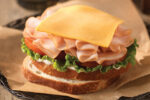Pasta is a staple food in many cuisines, and while pasta is commonly measured using cups in the United States, grams are the standard measurement across the globe. Understanding the weight of dried pasta can help home cooks determine proper portion sizes and amounts for recipes. Different pasta shapes weigh different amounts for a given volume due to varying density and construction.
- Thin, long strands like spaghetti and linguine weigh the least at around 125 grams per cup, while thicker pastas weigh more.
- Hollow shaped pastas, like penne and rigatoni, tend to weigh the most at 135 to 140 grams per cup due to air pockets.
- Filled pastas, like ravioli and tortellini, also tend to weigh more.
In addition to initial weight, dried pasta absorbs liquid and increases in volume and weight while cooking, resulting in a yield of 2.5 to 3 cups of cooked pasta for every cup of dried pasta, weighing between 290 to 350 grams.
Basic Information About Pasta Weight And Measurements
Pasta is a staple food in many countries around the world, and while it is commonly measured using cups in the United States, grams are the standard measurement across Europe and most of the globe. Understanding the weight of dried pasta, as measured in grams, can help home cooks determine proper portion sizes for recipes along with adequate amounts required.
As a general guide, one standard US cup of dried pasta typically weighs between 125 to 140 grams. The weight can vary due to differences in the type of pasta as well as manufacturing processes. Pasta weights also tend to fluctuate slightly between brands for the same style due to variables in dough consistency and cutting techniques.
- Thin, long pasta shapes like spaghetti and linguine typically weigh on the lighter end of the scale at around 125 grams per cup. This is because they are thinner noodles with less surface area and higher space efficiency when measured by volume. In contrast, thicker pasta styles like fettuccine and bucatini tend to weigh a bit more, coming in around 130 to 135 grams per cup. The increased width and chunkiness of the noodles results in more material and weight for the same volumetric cup measurement.
- Hollow pasta shapes like penne, rigatoni, and most tubular pastas also tend to weigh more, ranging from 135 to 140 grams per cup. This slightly higher weight is due to the air pockets inside the pasta tubes. Although the pastas occupy the same volume, or cup size, the air gaps mean there is less actual pasta, so more is required by weight to make up a full cup volume.
- Filled pasta styles like ravioli and tortellini also typically fall on the higher end of the weight scale at around 140 grams per cup. This increased weight reflects the filling within the pasta, which adds additional mass but does not increase the volume taken up within the measuring cup.
In summary, while one cup of dried pasta is generally considered to weigh between 125 to 140 grams, the exact weight can vary based on the type of pasta as well as nuances in production. Thinner, solid strands tend to weigh less while thicker, hollow, and stuffed pastas usually weigh more.
Weighing Different Types Of Pasta
When weighing different types of pasta, it is important to keep in mind the various factors that influence the weight of dried pasta per cup measurement.
Thin strands like spaghetti and linguine typically weigh the least amount at around 125 grams per standard US cup. This is because these long, thin noodle shapes have higher density per volume due to their narrow profile. They also have less surface area and take up less space, requiring less material to fill a standard cup measurement.
- Thicker pasta strands such as fettuccine, pappardelle, and bucatini tend to weigh slightly more, coming in around 130 to 135 grams per cup on average. The wider widths of these noodles mean they have lower density and more surface area. More pasta material is needed to occupy the same cup volume, leading to a slightly heavier weight.
- Hollow pasta shapes like penne, rigatoni, ziti, and most tubular pastas tend to fall at the higher end of the weight scale at around 135 to 140 grams per cup. The air pockets within these tube-shaped noodles reduce their effective density when measured by volume. Although the pastas fill the same volumetric cup measurement, they weigh more due to the space occupied by air gaps rather than actual pasta.
- Filled pasta styles, which include tasty options like ravioli and tortellini, also tend to weigh in at around 140 grams per cup. This is the heaviest weight for a given volume of dried pasta. The filling contained within the pasta dough balls, tortellini, or other shapes adds extra mass without increasing the volume occupied within the measuring cup. More pasta material is therefore needed to make up a standard cup amount.
In summary, the weight of dried pasta per cup volume tends to increase as the noodle shapes get thicker, hollower, and more filled. Thin, solid strands like spaghetti and linguine weigh the least while wider and more complex shapes made with air pockets and filling generally weigh the most. By considering noodle dimensions, density, surface area, and effective volume, home cooks can accurately estimate the weight of various dried pasta types to ensure appropriate portion sizes and recipe measures.
Cooking Yield And Final Weight
In addition to understanding the weight of dried pasta, it is also important to consider how pasta absorbs water and increases in volume and weight during the cooking process.
On average, one standard cup of dried pasta will yield between 2.5 to 3 cups of cooked pasta once it has absorbed water and softened during cooking. However, the actual yield can vary slightly based on the shape of pasta as well as its thickness, composition, and degree of drying prior to packaging.
Generally speaking, longer or thinner pastas with higher exposed surface area tend to absorb more water and yield higher amounts of cooked pasta per cup of dried pasta. In contrast, filled pastas and thicker noodles may yield slightly less.
In terms of weight, one standard cup of dried pasta generally weighs between 125 to 140 grams, as described previously. After cooking, this same cup amount of pasta will typically yield between 290 to 350 grams of cooked pasta once it has absorbed liquid and doubled or tripled in volume.
The range in final weights reflects differences in noodle shapes, brand variances, and the amount of water used during the cooking process itself. More water yields more absorption and more weight gain, while less water results in slightly less absorption and a lighter final product.
Home cooks can use these general guidelines to prepare appropriate amounts of dried pasta for their desired number of servings. As an example, four servings would require about 2 cups or 250-280 grams of dried pasta. This will yield approximately 5 to 6 cups or 840 to 1,000 grams of cooked pasta once boiled according to packet instructions.
Lastly, restaurant servings tend to be heavier due to larger portion sizes compared to home cooking. Rough estimates include 70-90 grams of dried pasta per “regular” restaurant serving and 140-175 grams of dried pasta for a large restaurant serving. However, these weights will vary by establishment based on their own recipes and internal standards.
Overall, pasta behaves predictably during the cooking process by generally absorbing two to three times its original volume in water while approximately doubling or tripling in weight. Home cooks can capitalize on this knowledge to estimate cooking yields and determine optimal amounts of dried pasta for their recipe needs.
In conclusion, understanding the weight of dried pasta and how it changes during cooking can help home cooks accurately measure and portion their pasta. Different pasta shapes weigh varying amounts, so considering factors like thickness, filledness, and density is important. However, general guidelines do exist, and by following the recommendations around 125-140 grams per cup of dried pasta and 2.5 to 3 times the volume after cooking, most recipes and servings can be prepared successfully.
FAQs
- How many ounces is a cup of pasta? About 4 to 5 ounces
- How many pounds is a cup of pasta? Around 0.25 to 0.3 pounds
- What is the weight of uncooked pasta per serving? Typically 50-70 grams per standard serving
- How many grams of pasta per person? Generally 60 grams of dried pasta per person




